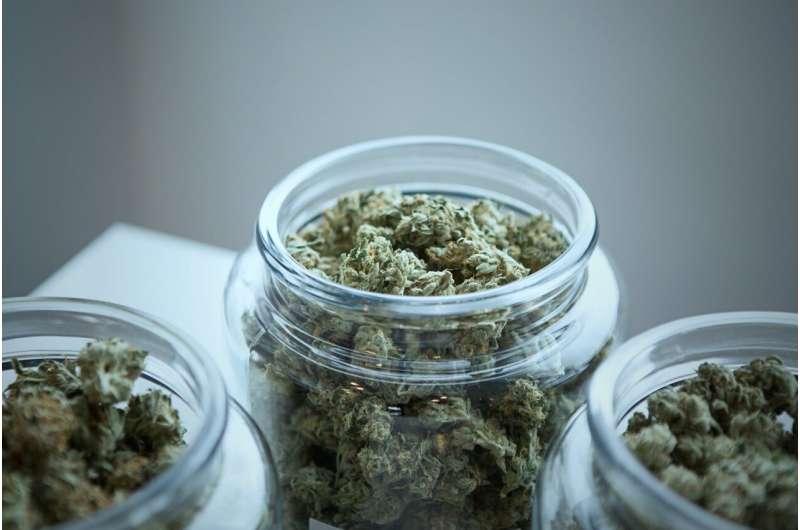This article has been reviewed according to Science X's editorial process and policies. Editors have highlighted the following attributes while ensuring the content's credibility:
fact-checked
trusted source
proofread
Medical cannabis study reveals patterns of cannabis use and consumption

As of April 2023, 38 states in the U.S. allow for the medical use of marijuana. Despite the increasing use of cannabis products for medical purposes, state programs do not currently have consistent guidelines for the use of the two most commonly used compounds—cannabidiol (CBD) and tetrahydrocannabinol (THC)—being dispensed and consumed by patients.
Published in Current Therapeutic Research
, a study led by the University of Minnesota in partnership with Vireo Health, a multi-state medical marijuana company, looks to bridge this knowledge gap. Both CBD and THC interact with the body in complicated ways, which means that symptom control and side effects vary greatly from person-to-person. The lack of the standardized procedures for state-run medical cannabis programs makes it difficult to predict patient response, particularly when taking into account that patients in these programs may have comorbid conditions and unanticipated and highly variable drug interactions with existing medications. "Our past data shows blood concentrations of CBD and THC can vary widely among patients and according to fat content in food, indicating possible inconsistent exposure that could lead to variations in response and unanticipated side effects," said Angela Birnbaum, a professor in the Department of Experimental and Clinical Pharmacology in the College of Pharmacy and the lead author on the paper. Researchers analyzed data from approximately 50% of all registered medical cannabis users in Minnesota between June 2016 and November 2019, all of whom were enrolled in the program with Vireo Health. In order to characterize the extent of exposure to cannabis products, they examined CBD and THC content of dispensed products and dosing among patients with qualifying conditions, by age and by which cannabis products were used. The study found approximately 60% of patients receiving cannabis had indications of intractable pain. As the largest population of patients, there were significant differences in dosages between older and younger adults within the same diagnosis, which raises questions about factors that contribute to the use of varied dosages in
Although data shows that CBD is effective for preventing seizures in epilepsy patients, a majority of these patients received formulations containing both THC and CBD. With the complex pharmacokinetics of both THC and CBD, the introduction of THC to this population highlights the importance of further research on the interplay of THC and CBD to better predict patient responses.
The study provides data from a program where product choice, major cannabinoid quantities and doses received are based on pharmacist selection and patient preference rather than based on a physician's prescription.
"Little information is available for most medical cannabis formulations and for particular patient populations," said Dr. Birnbaum. "More research is needed to understand the long-range influence of cannabis use, especially in older adults who are typically receiving multiple medications and have an increased potential for drug-drug interactions."
The researchers noted that more investigation is also needed to examine if clinically significant side effects are related to specific CBD and THC dosages.
More information: Xintian Lyu et al, Medical Cannabis Received by Patients According to Qualifying Condition in a US State Cannabis Program: Product Choice, Dosing, and Age-Related Trends, Current Therapeutic Research (2023). DOI: 10.1016/j.curtheres.2023.100709





















